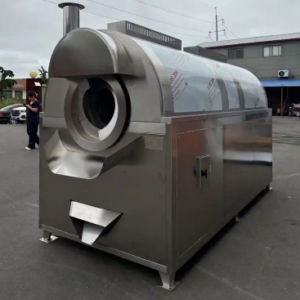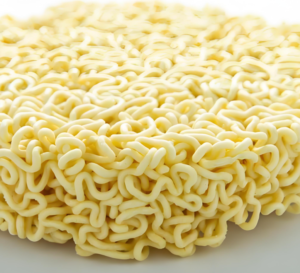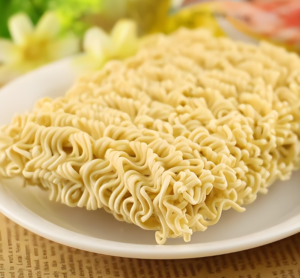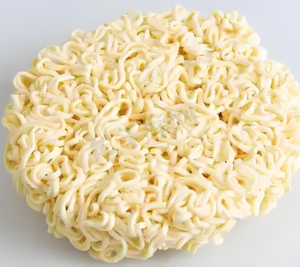<h1>The Future Prospects of Extruded Food in the Global Market</h1>Extruded food products, such as snacks, cereals, and pasta, are created through a high-pressure process that shapes ingredients into various forms. This innovative technique has revolutionized the food industry, offering efficiency and versatility. As global demand for convenient, nutritious foods rises, extruded products are poised for significant growth. This article explores the prospects of extruded food, highlighting opportunities for B2B players in foreign trade and manufacturing.
snack extruder machine
ToggleWhat is Extruded Food and How Does It Work?
Extruded food refers to items produced using extrusion technology, where raw materials like grains, proteins, and additives are forced through a die under heat and pressure. This process cooks and shapes the food simultaneously, making it ideal for creating uniform products. In B2B contexts, extrusion enables manufacturers to produce large volumes efficiently, catering to exporters and global suppliers.
One key advantage is the ability to fortify foods with nutrients, enhancing their health benefits. For instance, extruded snacks can be enriched with vitamins and minerals to meet consumer demands for healthier options. As international trade expands, companies specializing in extrusion machinery are seeing increased interest from emerging markets.
The Extrusion Process in Detail
The extrusion process begins with mixing ingredients, followed by heating and pressurizing them in an extruder machine. This step denatures proteins and gelatinizes starches, resulting in a malleable dough. The material is then extruded through a die to form specific shapes, like rings or puffs, and finally dried or coated.
This method is highly adaptable, allowing for the incorporation of diverse ingredients such as plant-based proteins or functional fibers. In foreign trade, B2B firms can leverage this flexibility to customize products for different regions, such as gluten-free options for European markets or fortified cereals for Asia-Pacific consumers.
Current Market Trends Driving Extruded Food Growth
The global extruded food market is expanding rapidly, with projections indicating a compound annual growth rate (CAGR) of over 5% through 2030. This surge is fueled by urbanization and changing lifestyles, where consumers seek quick, ready-to-eat meals. B2B exporters are capitalizing on this by supplying raw extruded products to retailers worldwide.
Key trends include the rise of plant-based extruded foods, driven by veganism and sustainability concerns. For example, extruded meat alternatives made from pea or soy protein are gaining traction in North America and Europe. Manufacturers in developing regions like Africa are also adopting extrusion to boost local production and reduce import dependency.
Another factor is the integration of clean-label ingredients, where extruded foods are made without artificial additives. This appeals to health-conscious buyers, creating opportunities for B2B partnerships in organic sourcing and certification, especially in trade agreements like those under the WTO.
Regional Insights and Export Opportunities
In Asia, countries like China and India are leading extruded food consumption due to population growth and increasing disposable incomes. B2B exporters from the US and Europe are forging alliances to supply advanced extrusion equipment and ingredients. This cross-border collaboration is enhancing global supply chains and fostering innovation.
Latin America is emerging as a key production hub, with Brazil exporting extruded snacks to the Middle East. Trade barriers are decreasing, allowing for smoother B2B transactions and market penetration. Companies focusing on sustainable packaging for extruded products are particularly well-positioned for future growth.
Technological Innovations in Extrusion
Advancements in extrusion technology are transforming the industry, with new machinery offering precise control over temperature and pressure. This leads to better product quality and reduced waste, which is crucial for cost-sensitive B2B operations. Innovations like twin-screw extruders enable the processing of sensitive ingredients, such as probiotics or omega-3 fatty acids.
Automation and AI integration are streamlining production lines, minimizing errors and increasing output. For foreign trade, this means manufacturers can meet stringent international standards more efficiently, opening doors to markets in the EU and North America. B2B firms investing in these technologies are likely to gain a competitive edge.
Sustainable and Eco-Friendly Extrusion Methods
Sustainability is a growing focus, with new extrusion techniques using less energy and water. For instance, low-shear extrusion preserves nutrients while reducing environmental impact, appealing to eco-conscious buyers. In B2B trade, this aligns with global initiatives like the UN Sustainable Development Goals, encouraging partnerships for green manufacturing.
Recyclable materials for extruded food packaging are also on the rise, helping companies comply with regulations in regions like the EU. This shift not only reduces carbon footprints but also creates new export opportunities for sustainable extruded products.
Benefits and Challenges of Extruded Food
Extruded foods offer numerous benefits, including extended shelf life and enhanced nutritional profiles. They are cost-effective for large-scale production, making them attractive for B2B exporters. Additionally, the process allows for product diversification, helping businesses adapt to market demands.
However, challenges exist, such as maintaining food safety during high-heat processing. Contamination risks can affect international trade, requiring adherence to standards like HACCP. B2B players must invest in quality control to mitigate these issues and ensure reliable exports.
Overcoming Regulatory Hurdles in Global Trade
Regulatory compliance is a major challenge, with varying food safety laws across countries. For example, the FDA in the US has strict guidelines for extruded products, while China’s regulations emphasize labeling. B2B exporters need to navigate these through certifications and partnerships.
Despite these obstacles, opportunities abound in emerging markets where demand outpaces regulation. By adopting best practices, companies can turn challenges into advantages, such as premium pricing for compliant products.
Future Prospects: Growth and Emerging Trends
The future of extruded food looks promising, with expected market growth to exceed $150 billion by 2035. Factors like population growth and urbanization will drive demand, particularly in developing regions. B2B firms in foreign trade can capitalize on this by expanding into untapped markets.
Emerging trends include the development of 3D-printed extruded foods, allowing for personalized nutrition. This innovation could revolutionize B2B supply chains, enabling custom orders for health-focused consumers. Additionally, the integration of blockchain for traceability will enhance trust in global trade.
Impact of Consumer Preferences on Extrusion
Shifts in consumer preferences, such as a demand for high-protein extruded bars, are shaping the industry. B2B manufacturers are responding by innovating with alternative proteins from insects or algae. This trend supports sustainable practices and opens new export avenues.
Furthermore, the rise of e-commerce is facilitating direct B2B sales of extruded food machinery and ingredients, bypassing traditional channels. Companies that adapt to digital trade platforms will thrive in this evolving landscape.
Frequently Asked Questions
Below are answers to common questions about extruded food prospects:
- What is the main advantage of extrusion in food production? It allows for efficient, scalable manufacturing while preserving nutrients, making it ideal for B2B exporters targeting global markets.
- How is extruded food impacting sustainability? Modern extrusion reduces waste and energy use, supporting eco-friendly practices that align with international trade standards.
- What challenges do B2B companies face in extruded food trade? Key issues include regulatory compliance and supply chain disruptions, but advancements in technology are helping overcome these barriers.
- Which regions offer the most growth potential for extruded foods? Asia-Pacific and Latin America are hotspots, driven by rising demand and supportive trade policies.
- How can businesses prepare for future trends in extrusion? Investing in R&D and sustainable innovations will position B2B firms to lead in the expanding global market.
In summary, the prospects for extruded food are bright, with technological advancements and market trends paving the way for sustained growth. B2B players in foreign trade can seize opportunities by focusing on innovation, sustainability, and strategic partnerships. As the industry evolves, those who adapt will thrive in this dynamic sector, contributing to a more efficient and nutritious global food supply.








